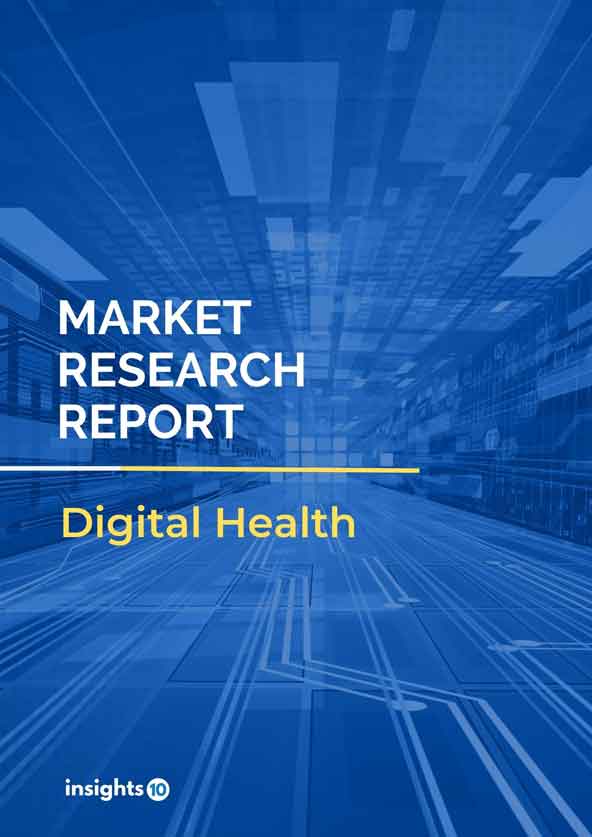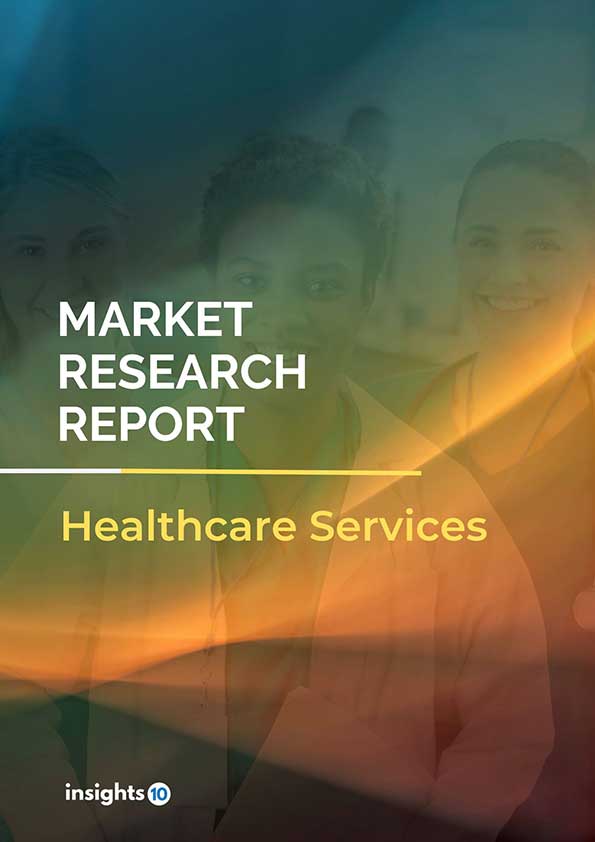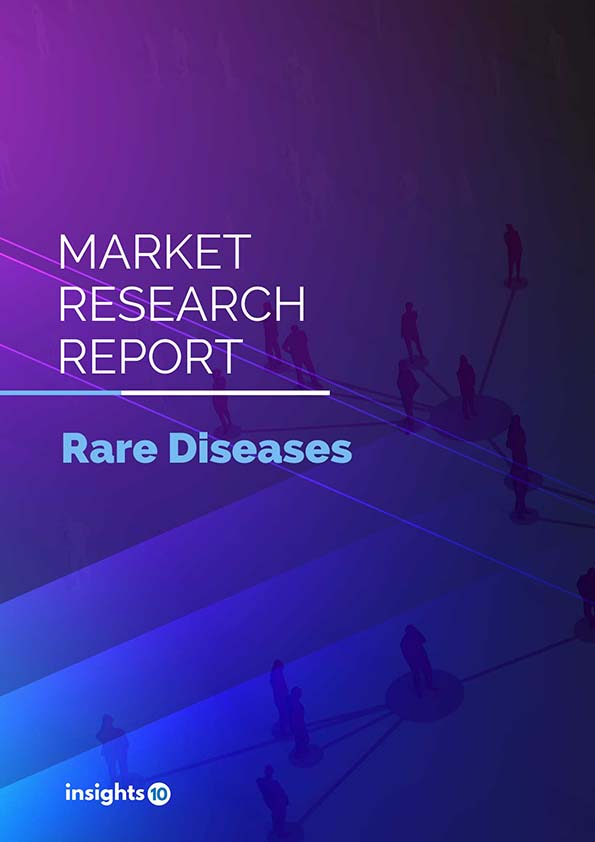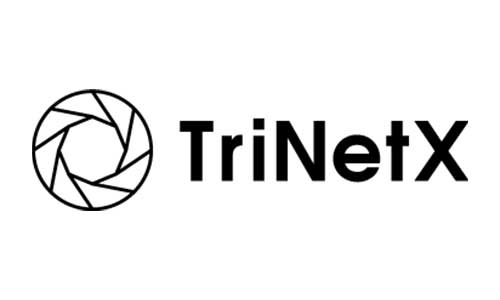Brazil Electronic Health Records Market Analysis
Brazil's Electronic Health Record (EHR) market size was valued at $760 Mn in 2022 and is estimated to expand at a compound annual growth rate (CAGR) of 17.5% from 2022-30 and will reach $2760 Mn in 2030. Brazil's EHR market is growing as EHR can reduce the frequency of medical errors by improving the accuracy and clarity of medical records. The market is segmented by product, application, and end user. The key market players are Prosoft, Datasus, MedData, Allscripts, Cerner, and others.
Buy Now

Brazil Electronic Health Record (EHR) Market Executive Summary
Brazil's Electronic Health Record (EHR) market size was valued at $760 Mn in 2022 and is estimated to expand at a compound annual growth rate (CAGR) of 17.5% from 2022-30 and will reach $2760 Mn in 2030. Brazil's healthcare expenditure as a percentage of GDP has been around 9% to 10% in recent years. The country has a universal healthcare system, known as the Unified Health System (SUS), which is funded by the government and provides free access to basic healthcare services for all citizens. Despite this, healthcare spending in Brazil remains relatively low compared to other countries in the region and developed countries. The government is currently making efforts to increase healthcare spending and improve the overall quality of healthcare in the country. This includes increasing investments in public healthcare infrastructure and expanding access to specialized treatments and technologies. It is expected that digital healthcare spending in Brazil will increase in the coming years as the country looks to improve its healthcare system and make it more efficient and accessible. This is likely to include investments in telemedicine, electronic medical records, and other digital health technologies.
Brazil has a universal healthcare system, known as the Unified Health System (SUS), which has implemented electronic health records (EHRs) in some regions of the country. The Brazilian government has been working to implement EHR systems in public healthcare providers through the National Health System Information Technology Department (DATASUS). The EHR systems provided by DATASUS are designed to integrate with other systems and platforms, such as telemedicine, laboratory systems, and imaging systems.

Market Dynamics
Market Growth Drivers
EHR can reduce the frequency of medical errors by improving the accuracy and clarity of medical records. EHRs give doctors access to more thorough patient data, empowering them to swiftly decide on the best course of treatment, enhance patient care, and reduce safety risks. It is projected that these factors will increase EHR adoption.
The electronic health record (EHR) streamlines the clinician's workflow by automating information access. The EHR can directly or indirectly support various care-related tasks like evidence-based decision support, quality monitoring, and outcomes reporting through a number of interfaces. It is hoped that these advantages would help the EHR sector grow even more.
The necessity for doctors to have quick access to patient records is another factor that is projected to drive the EHR market.
Market Restraints
There is a lack of standardization in the Brazilian EHR market, which has hindered interoperability and data sharing between different systems and health providers. Furthermore, Many health facilities in Brazil, particularly in rural and remote areas, lack the necessary IT infrastructure to support EHR implementation. This includes a lack of internet connectivity, hardware, and trained personnel.
Moreover, the implementation and maintenance of EHR systems can be costly, and many health facilities in Brazil struggle to secure the necessary funding. Additionally, there are concerns about the security and privacy of patient data in EHR systems, particularly with regard to hacking and data breaches.
Competitive Landscape
Key Players
- Tasy (BRA)
- Medclin (BRA)
- Prosoft (BRA)
- Datasus (BRA)
- MedData (BRA)
- Allscripts
- Cerner
- Epic Systems
- eClinicalWorks
- Athenahealth
- McKesson
- Meditech
- NextGen Healthcare
- GE Healthcare
- Siemens Healthineers
Healthcare Policies and Regulatory Landscape
Policy changes and Reimbursement scenario
In Brazil, the regulation of electronic health records (EHRs) is primarily the responsibility of the Brazilian Ministry of Health. The Ministry has established guidelines for the use and implementation of EHR systems in the country, with a focus on ensuring the security and confidentiality of patient information. Additionally, the National Health Surveillance Agency (ANVISA) is responsible for regulating the technical and operational aspects of EHR systems. It is important for EHR systems used in Brazil to comply with these regulations to ensure the proper handling and protection of patient information.
1. Executive Summary
1.1 Digital Health Overview
1.2 Global Scenario
1.3 Country Overview
1.4 Healthcare Scenario in Country
1.5 Digital Health Policy in Country
1.6 Recent Developments in the Country
2. Market Size and Forecasting
2.1 Market Size (With Excel and Methodology)
2.2 Market Segmentation (Check all Segments in Segmentation Section)
3. Market Dynamics
3.1 Market Drivers
3.2 Market Restraints
4. Competitive Landscape
4.1 Major Market Share
4.2 Key Company Profile (Check all Companies in the Summary Section)
4.2.1 Company
4.2.1.1 Overview
4.2.1.2 Product Applications and Services
4.2.1.3 Recent Developments
4.2.1.4 Partnerships Ecosystem
4.2.1.5 Financials (Based on Availability)
5. Reimbursement Scenario
5.1 Reimbursement Regulation
5.2 Reimbursement Process for Diagnosis
5.3 Reimbursement Process for Treatment
6. Methodology and Scope
Electronic Health Records Market Segmentation
By Product (Revenue, USD Billion):
Web-based and cloud-based software is more affordable since it saves on additional costs like license fees, regular upgrades, and device upkeep. Additionally, it reduces the need for IT workers because SaaS providers help with software installation, configuration, testing, operation, and upgrades. The cost-effectiveness of cloud-based EHR systems in small healthcare organizations will therefore fuel developments as well as the expansion of the category. MHealth services
- Web/Cloud-based EHR software
- On-premise EHR software
By Application Type (Revenue, USD Billion):
Large amounts of patient health data may be stored and processed by EHRs, which aids doctors in automating both financial and operational operations with rapid and simple access. Therefore, integrated EHR and practice management software navigates all tasks, making it easier for front-line healthcare providers to do their jobs, and will therefore drive the segment's revenue during the anticipated time period.
- E-prescription
- Practice management
- Referral management
- Patient management
- Population health management
By End User (Revenue, USD Billion):
By 2027, the category of ambulatory surgical centres is expected to rise at a 7.1% annual rate. The acceptance of EHR in these facilities will be fueled by ambulatory surgical centres' growing preference for digital technologies to efficiently manage workflow. These are outpatient facilities offering planned surgeries and same-day surgical services.
- Hospitals
- Specialty centers
- Clinics
- Ambulatory surgical centers
- Others
Methodology for Database Creation
Our database offers a comprehensive list of healthcare centers, meticulously curated to provide detailed information on a wide range of specialties and services. It includes top-tier hospitals, clinics, and diagnostic facilities across 30 countries and 24 specialties, ensuring users can find the healthcare services they need.
Additionally, we provide a comprehensive list of Key Opinion Leaders (KOLs) based on your requirements. Our curated list captures various crucial aspects of the KOLs, offering more than just general information. Whether you're looking to boost brand awareness, drive engagement, or launch a new product, our extensive list of KOLs ensures you have the right experts by your side. Covering 30 countries and 36 specialties, our database guarantees access to the best KOLs in the healthcare industry, supporting strategic decisions and enhancing your initiatives.
How Do We Get It?
Our database is created and maintained through a combination of secondary and primary research methodologies.
1. Secondary Research
With many years of experience in the healthcare field, we have our own rich proprietary data from various past projects. This historical data serves as the foundation for our database. Our continuous process of gathering data involves:
- Analyzing historical proprietary data collected from multiple projects.
- Regularly updating our existing data sets with new findings and trends.
- Ensuring data consistency and accuracy through rigorous validation processes.
With extensive experience in the field, we have developed a proprietary GenAI-based technology that is uniquely tailored to our organization. This advanced technology enables us to scan a wide array of relevant information sources across the internet. Our data-gathering process includes:
- Searching through academic conferences, published research, citations, and social media platforms
- Collecting and compiling diverse data to build a comprehensive and detailed database
- Continuously updating our database with new information to ensure its relevance and accuracy
2. Primary Research
To complement and validate our secondary data, we engage in primary research through local tie-ups and partnerships. This process involves:
- Collaborating with local healthcare providers, hospitals, and clinics to gather real-time data.
- Conducting surveys, interviews, and field studies to collect fresh data directly from the source.
- Continuously refreshing our database to ensure that the information remains current and reliable.
- Validating secondary data through cross-referencing with primary data to ensure accuracy and relevance.
Combining Secondary and Primary Research
By integrating both secondary and primary research methodologies, we ensure that our database is comprehensive, accurate, and up-to-date. The combined process involves:
- Merging historical data from secondary research with real-time data from primary research.
- Conducting thorough data validation and cleansing to remove inconsistencies and errors.
- Organizing data into a structured format that is easily accessible and usable for various applications.
- Continuously monitoring and updating the database to reflect the latest developments and trends in the healthcare field.
Through this meticulous process, we create a final database tailored to each region and domain within the healthcare industry. This approach ensures that our clients receive reliable and relevant data, empowering them to make informed decisions and drive innovation in their respective fields.
To request a free sample copy of this report, please complete the form below.
We value your inquiry and offer free customization with every report to fulfil your exact research needs.









































